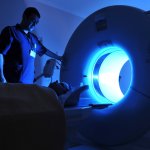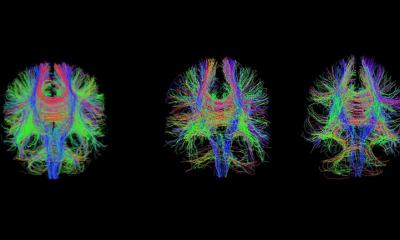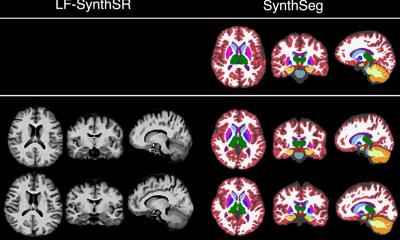Image source: Adobe Stock/Tyler Olson
News • Neurodiversity
Autism-friendly MRI, for more inclusive medical imaging
Dr Christina Malamateniou spoke to The European Society for Magnetic Resonance in Medicine and Biology about the recent review she led to help make MRI brain scans more accessible to autistic people.
Autism is neither a disorder, nor a disease; it is part of neurodiversity, which affects the wiring of the brain and may impact on how autistic people communicate and interact with the world. About One in 100 people are autistic and there are around 700,000 autistic adults and children in the UK. Autistic brains are beautiful in their diversity but stereotyped social constructs and lack of inclusive adaptations may make access to healthcare challenging for them and their families.
A recent systematic review, published in the journal Autism, and also survey, published in the journal, Radiography, of how to make the experience of undergoing an MRI brain scan more accessible to autistic people have been gaining acknowledgement with autism clinicians and campaigners, with lead author Dr Christina Malamateniou, Postgraduate Programme director (taught and research) for Radiography at City, University of London being interviewed about the research by The European Society for Magnetic Resonance in Medicine and Biology (ESMRMB).
Recommended article

Article • Patient-focused radiography
Dementia and autism patients in the MRI: not aggressive, just lost
Patients with neurological conditions such as dementia or autism can prove especially challenging for radiographers. A session at the ECR Overture in March gave insights to a patient-focused approach.
The systematic review provides an insight into the most widely used reasonable adjustments, which could facilitate MRI scanning of autistic patients given the range of their sensory sensitivities and communication preferences and needs. These adjustments were found to include efficient communication, simulation for familiarisation with the environment, distraction techniques, and scan-based optimisation. The findings of the survey surveyed UK radiographers with a questionnaire aimed to explore their perspectives and experiences regarding MRI scanning of autistic people. Open to all UK radiographers, the responses of 130 were analysed in the review, which included both open-ended and closed type questions to ascertain their views of areas including knowledge, experience and understanding of autism by practitioners and their ability to recognise autistic patients and barriers and facilitators to making a MRI scan autism-friendly.
Communication [...] is the information you provide before the scan so there can be some preparation of the environment and the team, during the scan, so that it’s less distressing to the autistic individuals
Christina Malamateniou
The review concluded that a general lack of knowledge and training related to autism, the lack of formal guidelines aimed at the radiography workforce, and lack of standardisation of practice seem to create challenging conditions for radiographers to deliver the quality of service they aspire to. This was also in agreement with the findings of the Autism review, in that effective communication between healthcare teams, with the patients and their carer(s), a well-adjusted physical environment, and tailoring of the examination are key components of a patient and person-centred, successful MRI examination.
Talking to the ESMRMB, Dr Malamateniou said: 'There are many different ways to make an MRI scan autism friendly and accessible to autistic individuals. The most important aspect based on the systematic review and research surveys is communication, and this is the information you provide before the scan so there can be some preparation of the environment and the team, during the scan, so that it’s less distressing to the autistic individuals, in terms of the sensory sensitivities and the anxieties they may have about the scan, which is heightened and also after the scan, the aftercare and the results. So communication is really important and is something that can be very different between an autism friendly and a regular scan, a routine clinical MRI.'
Facilitating MRI scan access means autistic people need not live with undiagnosed conditions or chronic pain and they can get the treatment they need at the time they need it. This is vital for their wellbeing and quality of life, as it is for every person.
Source: City, University of London
08.05.2022











